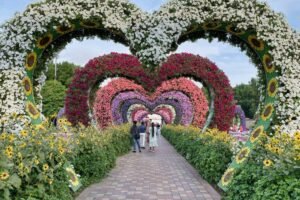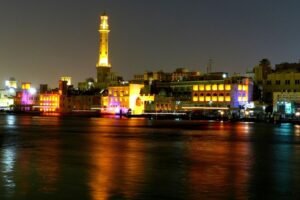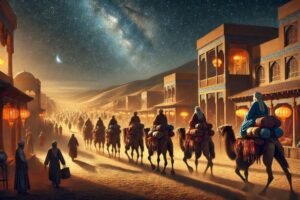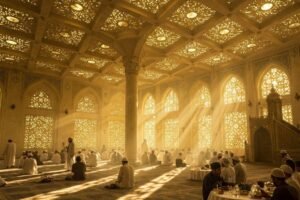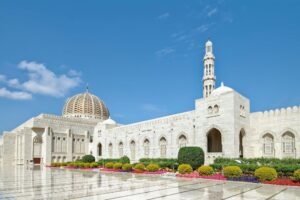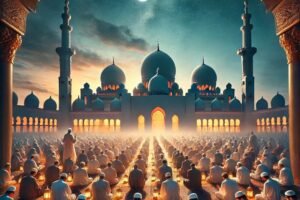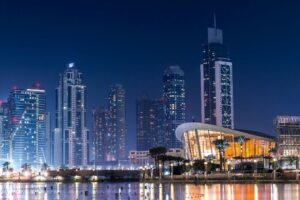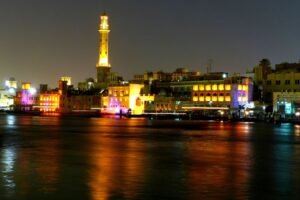Thailand is a country rich in culture, history, and tradition, and two of its most cherished festivals are Songkran and Loy Krathong. These festivals are not only deeply rooted in Thai history and spirituality, but they also represent the vibrant spirit and traditions of Thailand. While both celebrations involve water and offer unique experiences, they each have distinct purposes, customs, and atmospheres. Here’s a comprehensive guide to these two beloved festivals, exploring their history, significance, and the best ways to experience them in Thailand.
1. Songkran Festival: The Thai New Year Celebration

What Is Songkran?
Songkran, widely recognized as the Thai New Year, takes place annually from April 13 to 15, though in some regions the celebration can extend up to a week. This festival marks the beginning of the solar new year and is celebrated with large gatherings, water fights, and traditional rituals. Songkran’s name is derived from the Sanskrit word “saṃkrānti,” meaning “astrological passage,” signifying the transition of the sun into a new zodiac.
The Origins and Cultural Significance
Originally, Songkran began as a time for families to gather, pay respect to elders, and make merit at local temples. The sprinkling of water was initially a gentle gesture symbolizing the cleansing of bad luck and sins, as well as a way to offer blessings. Over the years, however, this water ritual has transformed into lively water fights across the country, yet the symbolic purpose of cleansing and renewal remains central to the festival.

Where to Celebrate Songkran in Thailand
The most popular places to experience Songkran are Bangkok, Chiang Mai, and Pattaya, each offering unique festivities:
Bangkok: In Bangkok, Khao San Road and Silom Road turn into bustling hubs of water fights, with locals and tourists alike joining in the festivities. Temples such as Wat Pho and Wat Arun also host traditional Songkran ceremonies where people can make offerings and receive blessings.
Chiang Mai: Chiang Mai, in northern Thailand, hosts one of the most iconic Songkran festivals, lasting nearly a week. Locals and visitors flock to the moat surrounding the old city to splash each other with water. The traditional side of Songkran is equally celebrated here, with parades, Buddhist rituals, and water pouring ceremonies at temples like Wat Phra Singh.
Pattaya: Pattaya’s Songkran festivities are some of the liveliest in Thailand. Known as Wan Lai, Pattaya’s version of Songkran continues past April 15 and features concerts, beauty contests, and large-scale water fights along Beach Road.
Traditional Songkran Activities
Water Fights: The water fights are undoubtedly the highlight of Songkran, where locals and tourists splash each other with water guns, buckets, and even hoses. These water fights have become a joyful way to cool off during Thailand’s hottest month.
Merit-Making: Many Thais visit temples to make merit by offering alms, lighting incense, and performing water pouring rituals over Buddha statues. This act of merit-making symbolizes purification and is believed to bring blessings for the upcoming year.
Respecting Elders: Thai people also use this time to honor their elders. Traditionally, young people pour fragrant water over the hands of their parents and grandparents as a sign of respect and ask for blessings.
Parades and Cultural Performances: Traditional music, dancing, and parades featuring Buddha images and beautifully dressed participants are a common sight in cities like Chiang Mai and Bangkok.
Tips for Celebrating Songkran
Dress Appropriately: Wear light, quick-drying clothing and be respectful by avoiding swimwear.
Waterproof Your Belongings: Keep valuables in waterproof bags, as water splashing is widespread.
Respect Local Customs: Remember that Songkran, despite its fun atmosphere, is rooted in Thai traditions, so always be respectful of the local customs and follow the cultural guidelines.
2. Loy Krathong: A Festival of Lights and Gratitude

What Is Loy Krathong?
Loy Krathong is celebrated on the full moon of the 12th lunar month, which usually falls in November. Known as the “Festival of Lights,” it’s a time for Thai people to pay respects to the goddess of water, Phra Mae Khongkha, and seek forgiveness for polluting the waters. The festival involves creating beautiful floating lanterns, or krathongs, decorated with flowers, candles, and incense. People release these krathongs into rivers, canals, and ponds, symbolizing the release of negative energy and misfortune.
The Origins and Cultural Significance
Loy Krathong has roots in ancient Indian customs, where the release of floating lanterns represents gratitude to the water goddess. For Thai people, the festival is both a spiritual and symbolic event, expressing gratitude for water while letting go of past grievances. In recent years, it has also become a romantic celebration, where couples release krathongs together, hoping for good fortune and happiness in their relationship.

Where to Celebrate Loy Krathong in Thailand
The best locations for experiencing Loy Krathong include Chiang Mai, Sukhothai, and Bangkok:
Chiang Mai: Chiang Mai celebrates Loy Krathong alongside Yi Peng, the Lanna festival of floating sky lanterns. Thousands of lanterns are released into the sky, creating a magical spectacle. The Ping River and Nawarat Bridge are popular spots for Loy Krathong activities, and the city comes alive with parades, fireworks, and dance performances.
Sukhothai: As the birthplace of Loy Krathong, Sukhothai Historical Park is an ideal place to celebrate. Here, historical ruins and temples are illuminated with lanterns, and cultural performances bring the ancient festival to life.
Bangkok: In Bangkok, popular places to celebrate include the Chao Phraya River, Asiatique, and various public parks. Many locals and tourists release their krathongs on the river, creating a picturesque sight of floating lights reflecting off the water.
Traditional Loy Krathong Activities
Making and Releasing Krathongs: The krathong is typically made from banana leaves, flowers, candles, and incense. Some people include a coin or nail clipping to symbolize letting go of bad luck. Once the krathong is ready, it is gently released into the water with a wish for good fortune.
Sky Lanterns (Yi Peng): In northern Thailand, especially in Chiang Mai, people celebrate Yi Peng alongside Loy Krathong by releasing sky lanterns. These paper lanterns rise into the sky, symbolizing the release of negative energy and bad luck. The sight of thousands of lanterns ascending together creates an awe-inspiring view.
Beauty Pageants and Performances: Loy Krathong celebrations often include beauty pageants known as “Nang Noppamas” contests, inspired by a legendary Thai figure associated with the festival. Dance performances, fireworks, and traditional music further enhance the festive atmosphere.
Tips for Celebrating Loy Krathong
Choose an Eco-Friendly Krathong: Many locals use biodegradable krathongs made from natural materials like banana leaves instead of Styrofoam or plastic.
Respect Local Beliefs: While it’s a beautiful and romantic festival, it’s essential to understand that Loy Krathong holds a deep cultural significance for Thai people.
Arrive Early: Popular locations can get crowded, so arrive early to secure a good spot for watching the festivities.
Comparing Songkran and Loy Krathong
While both Songkran and Loy Krathong are festivals that highlight the values of gratitude, family, and community in Thailand, they celebrate different aspects of Thai culture:
Time of Celebration: Songkran takes place in April, marking the Thai New Year, while Loy Krathong is held in November, during the full moon of the 12th lunar month.
Nature of Celebration: Songkran is a lively, water-splashing celebration focused on cleansing and renewal. In contrast, Loy Krathong is more peaceful and romantic, with gentle rituals involving candle-lit krathongs and sky lanterns.
Symbolism: Songkran emphasizes purification and family bonding, while Loy Krathong is a gesture of gratitude towards nature, particularly water, and represents a release of negativity.
Conclusion
Thailand’s Songkran and Loy Krathong festivals are among the most celebrated and visually captivating events in Southeast Asia, each offering a unique cultural experience. Songkran brings people together in joyful celebration, filled with laughter, water fights, and family reunions, making it a favorite among locals and tourists alike. Loy Krathong, on the other hand, captivates with its tranquil beauty and spiritual symbolism, offering a time for gratitude, introspection, and making wishes for a brighter future. Whether you are drawn to the vibrancy of Songkran or the gentle elegance of Loy Krathong, experiencing these festivals firsthand offers a profound connection to Thai culture, values, and traditions.





